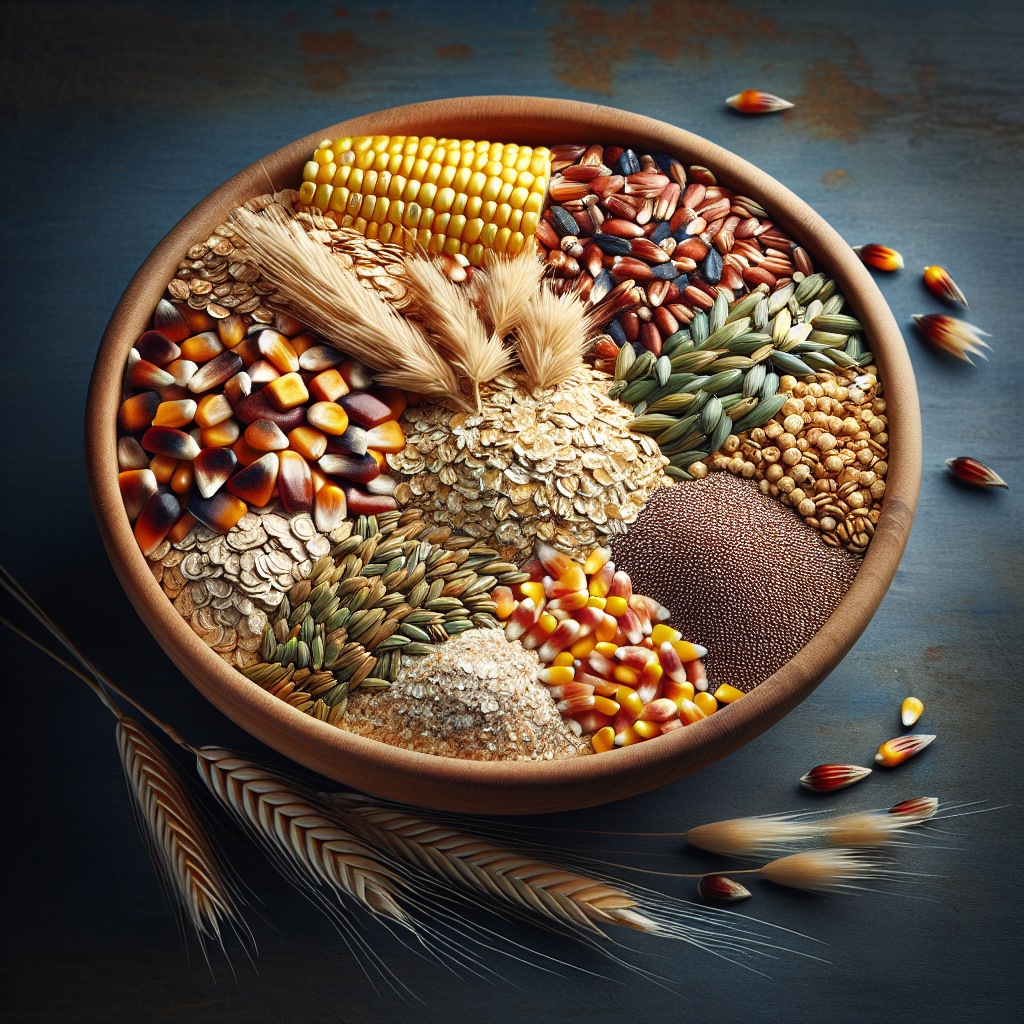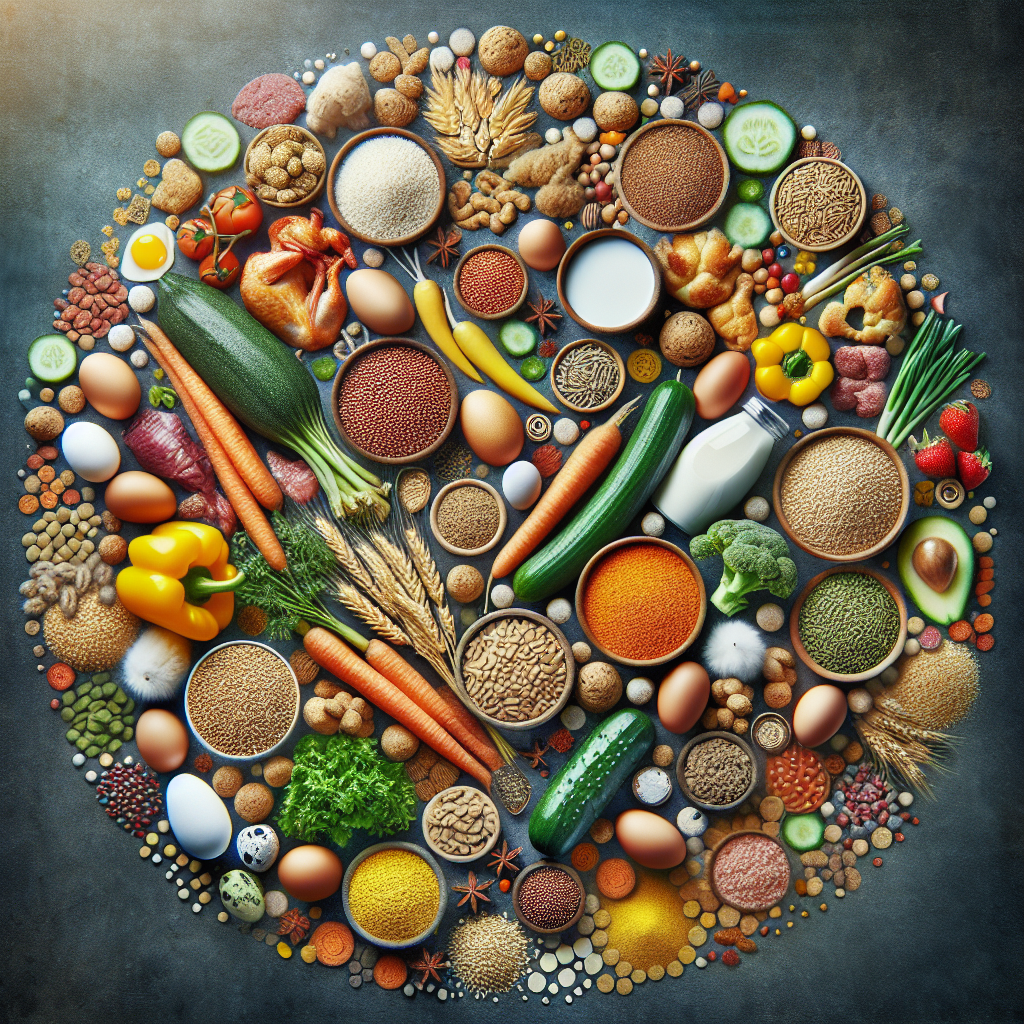Have you ever wondered how the calcium sources in feed impact the quality of eggshells in laying hens? Calcium is a crucial nutrient for hens’ egg production, but not all calcium sources are created equal. In this article, we will explore the fascinating relationship between different calcium sources in a hen’s diet and the resulting eggshell quality. Understanding this connection can help farmers optimize their feed formulations and ensure healthier, stronger eggshells for their flock. So, let’s dive into the world of calcium sources and eggshell quality, and discover how to give our feathered friends the best nutrition possible!
Calcium Sources in Feed
When it comes to ensuring good eggshell quality in laying hens, the calcium sources in their feed are of utmost importance. Laying hens require a sufficient amount of calcium to support the formation of strong and sturdy eggshells. There are several different calcium sources that can be used in their feed to meet this dietary requirement.
Calcium carbonate
Calcium carbonate is one of the most common and widely used calcium sources in poultry feed. It is a natural mineral derived from limestone and contains a high amount of calcium. Calcium carbonate has good bioavailability, meaning that it can be easily absorbed and utilized by the hens’ bodies. This makes it an effective choice for ensuring adequate calcium intake and promoting optimal eggshell quality.
Calcium citrate
Another calcium source that can be used in feed is calcium citrate. Unlike calcium carbonate, calcium citrate is a more soluble form of calcium. This means that it can be easily dissolved and absorbed in the hens’ digestive system. Calcium citrate may be particularly suitable for hens with specific dietary needs or conditions that require greater calcium absorption.
Calcium gluconate
Calcium gluconate is a supplementary form of calcium that is often used to address calcium deficiencies in laying hens. It is a synthetic form of calcium and is typically administered directly to the hens rather than being included in their regular feed. Although it may not be as commonly used as other calcium sources, calcium gluconate can be a useful option in situations where there is a need for immediate and targeted calcium supplementation.
Calcium phosphate
Calcium phosphate is another mineral compound that can provide a good source of calcium for laying hens. It contains both calcium and phosphorus, which are vital nutrients for the hens’ overall health and eggshell quality. The balanced ratio of calcium to phosphorus in calcium phosphate helps support optimal bone and eggshell development in the hens.
Oyster shell
Oyster shell is a natural calcium source derived from the shells of oysters. It is commonly used in layer feed to provide calcium to the hens. Oyster shell is an excellent source of bioavailable calcium and provides additional benefits in terms of grit, which helps the hens properly grind their feed in the gizzard. The inclusion of oyster shell in the feed can contribute to strong and durable eggshells.
Bone meal
Bone meal is another calcium source that is often used in feed formulations for laying hens. It is made from finely ground animal bones and contains a combination of calcium and phosphorus, similar to calcium phosphate. The inclusion of bone meal in the feed helps ensure adequate levels of both of these essential minerals, supporting the hens’ bone health and optimal eggshell quality.
Factors Affecting Eggshell Quality
Apart from the calcium sources used in the feed, various factors can also affect eggshell quality in laying hens. These factors play a crucial role in determining the strength, thickness, and integrity of the eggshells produced.
Calcium availability
One of the primary factors affecting eggshell quality is the availability of calcium in the hens’ diet. If the calcium sources used in the feed are not easily absorbed and utilized by the hens’ bodies, it can lead to calcium deficiencies and result in poor eggshell quality. It is essential to ensure that the calcium sources used in the feed have good bioavailability, meaning that they can be effectively absorbed and utilized by the hens.
Vitamin D3
Vitamin D3 is another important factor that affects calcium absorption and utilization in laying hens. This vitamin plays a vital role in regulating calcium metabolism and promoting the absorption of calcium from the intestines. It helps ensure that the calcium obtained from the diet is properly absorbed and transported to the various tissues, including the shell gland where eggshell formation occurs. Adequate levels of vitamin D3 are necessary for optimal eggshell quality.
Phosphorus levels
Besides calcium, phosphorus is also important for eggshell quality. The ratio of calcium to phosphorus in the hens’ diet needs to be well-balanced to optimize shell strength. If there is an imbalance between these two minerals, it can negatively impact eggshell quality. Providing the hens with the correct levels of phosphorus ensures that the calcium obtained from the feed is properly utilized for eggshell formation.
Protein levels
Protein levels in the hens’ diet can also influence eggshell quality. Sufficient protein is necessary for the hens’ overall health and the production of high-quality eggs. Inadequate protein levels in the diet can lead to reduced shell quality as the hens’ bodies prioritize protein allocation for vital functions, neglecting the formation of sturdy eggshells. Ensuring the recommended protein content in the hens’ feed can contribute to better eggshell quality.
Trace minerals
Trace minerals, such as zinc, manganese, and copper, also play an essential role in eggshell formation. These minerals are involved in the formation and regulation of enzymes and proteins required for shell development. A deficiency in these trace minerals can result in weaker eggshells or deformities. Including a balanced combination of trace minerals in the hens’ diet helps support proper shell formation and overall eggshell quality.
Calcium Availability
Calcium availability is crucial for laying hens to efficiently meet their calcium requirements for eggshell production. The absorption of calcium in the digestive system and the solubility of the calcium sources used in the feed directly impact calcium availability.
Absorption in the digestive system
The absorption of calcium in the hens’ digestive system plays a vital role in determining calcium availability. The efficiency of calcium absorption depends on several factors, including the calcium source used in the feed, the presence of other nutrients, and the overall health of the hens’ gastrointestinal tract. It is important to ensure that the calcium sources used in the feed are easily absorbed by the hens’ bodies to support optimal eggshell quality.
Solubility of calcium sources
The solubility of the calcium sources used in the feed also affects calcium availability. Calcium sources that are more soluble can be easily dissolved in the hens’ digestive system, allowing for efficient absorption and utilization by the hens’ bodies. Calcium carbonate, for example, is known for its high solubility, making it a commonly used and effective calcium source in feed formulations for laying hens. Ensuring the solubility of the calcium sources used helps maximize calcium availability and promote better eggshell quality.
Vitamin D3
Vitamin D3 plays a crucial role in calcium absorption and utilization in laying hens. It is responsible for regulating calcium metabolism and promoting the absorption of calcium from the intestines into the bloodstream. Vitamin D3 helps ensure that the calcium obtained from the diet is properly absorbed and transported to the shell gland for eggshell formation.
Role in calcium absorption
Vitamin D3 acts as a hormone that facilitates the active transport of calcium across the cells lining the intestines. It enhances the uptake of calcium by increasing the expression of calcium transport proteins in the intestinal epithelial cells. This allows for efficient absorption of calcium and ensures its availability for eggshell formation. Adequate levels of vitamin D3 in the hens’ diet are essential for optimal calcium absorption and utilization, thereby influencing eggshell quality.
Natural vs synthetic sources
Vitamin D3 can be obtained from both natural and synthetic sources. Natural sources of vitamin D3 include exposure to sunlight, which triggers the synthesis of vitamin D3 in the hens’ skin. Synthetic sources, on the other hand, are commercially available supplements that provide a concentrated form of vitamin D3. Whether sourced naturally or synthetically, it is important to ensure that laying hens receive sufficient amounts of vitamin D3 to support calcium metabolism and maintain good eggshell quality.
Phosphorus Levels
Achieving the right balance between calcium and phosphorus levels is crucial for optimal eggshell quality in laying hens. Phosphorus, along with calcium, plays a vital role in eggshell formation and shell strength.
Balancing calcium-to-phosphorus ratio
The ratio of calcium to phosphorus in the hens’ diet needs to be well-balanced for proper shell formation. Imbalances in this ratio can result in poor eggshell quality. While calcium is the primary mineral required for shell formation, phosphorus is equally important, as it contributes to the overall strength and integrity of the eggshell. Providing the hens with the correct levels of phosphorus ensures that the calcium obtained from the feed is effectively utilized for optimal eggshell quality.
Impact on shell strength
Phosphorus levels directly impact the strength of eggshells. A deficiency in phosphorus can lead to weaker shells, making them more susceptible to breakage during handling and transportation. It is essential to provide laying hens with adequate phosphorus levels to support the formation of strong and durable eggshells. Balancing the calcium-to-phosphorus ratio in the hens’ diet ensures an optimal environment for shell formation and enhances eggshell quality.
Protein Levels
Protein levels in laying hens’ diets have a significant impact on eggshell quality. Adequate amounts of protein are necessary for the hens’ overall health and the production of high-quality eggs.
Effect on shell quality
Insufficient protein levels in the hens’ diet can negatively affect eggshell quality. When protein is limited, the hens’ bodies prioritize protein allocation for vital functions, such as maintaining body tissues and performing metabolic processes. This can lead to reduced protein availability for shell formation, resulting in poor eggshell quality. Providing the recommended protein content in the hens’ feed ensures that the necessary protein resources are allocated for eggshell development, contributing to better shell quality.
Recommended protein content
The ideal protein content in laying hens’ diets may vary depending on factors such as age, breed, and production stage. However, it is generally recommended to provide a balanced diet containing around 16-18% protein for optimal egg production and shell quality. Ensuring the right protein levels in the hens’ feed contributes to the availability of essential amino acids necessary for eggshell formation and supports overall eggshell quality.
Trace Minerals
Trace minerals, including zinc, manganese, and copper, play a crucial role in eggshell formation and overall eggshell quality. These minerals are involved in the formation and regulation of enzymes and proteins required for shell development.
Importance for shell formation
Zinc, manganese, and copper are necessary for various essential processes involved in eggshell formation. They play roles in enzyme activation, collagen synthesis, and the formation of proteins required for shell matrix deposition. Deficiencies in these trace minerals can lead to weaker eggshells or deformities. It is essential to include a balanced combination of trace minerals in the hens’ diet to ensure proper shell formation and optimize eggshell quality.
Zinc
Zinc is particularly important for eggshell formation, as it is involved in enzyme activity and keratin synthesis, which are essential for shell matrix deposition. Inadequate zinc levels can result in poor eggshell quality, including thin shells or shell abnormalities. Including zinc in the hens’ diet in appropriate amounts supports the development of strong and well-formed eggshells.
Manganese
Manganese is another trace mineral that plays a crucial role in eggshell quality. It is involved in the synthesis of mucopolysaccharides, which are essential components of the shell membrane. Insufficient manganese levels can impair shell membrane formation, leading to reduced eggshell strength. Providing an adequate amount of manganese in the hens’ diet supports optimal shell membrane development and enhances overall eggshell quality.
Copper
Copper is necessary for several enzymatic reactions involved in eggshell formation. It plays a role in the formation and cross-linking of collagen fibers, which provide structural support to the shell matrix. A deficiency in copper can result in thinner eggshells and reduced shell strength. Including copper in the hens’ diet helps ensure that the necessary enzymatic processes for proper eggshell development are supported, contributing to better shell quality.
Calcium Carbonate
Calcium carbonate is the most commonly used calcium source in poultry feed. It provides a high amount of calcium and has good bioavailability, making it an effective choice for meeting the calcium needs of laying hens.
Most common calcium source in feed
Due to its high calcium content and availability, calcium carbonate is widely used in layer feed formulations. It is readily available, cost-effective, and easy to incorporate into the hens’ diet. The popularity of calcium carbonate as a calcium source stems from its proven efficacy in supporting eggshell quality.
High calcium content
Calcium carbonate boasts a high calcium content, making it an excellent choice for addressing the calcium needs of laying hens. The calcium provided is necessary for the formation of strong and durable eggshells. By including calcium carbonate in the hens’ feed, adequate calcium intake is ensured, promoting optimal eggshell quality in the hens’ eggs.
Good bioavailability
Bioavailability refers to the ability of a nutrient to be absorbed and utilized by the body. Calcium carbonate has good bioavailability, meaning that the calcium it provides can be efficiently absorbed and utilized by the hens’ bodies. This ensures that the calcium obtained from calcium carbonate is effectively utilized for eggshell formation, positively impacting eggshell quality.
Calcium Citrate
Calcium citrate is an alternative calcium source that may be used in feed formulations for laying hens. It offers its own unique set of benefits and considerations.
Bioavailability and absorption
Calcium citrate is a more soluble form of calcium compared to calcium carbonate. This increased solubility allows for easier dissolution and absorption in the hens’ digestive system. The enhanced bioavailability of calcium citrate ensures that the calcium it provides can be efficiently utilized for shell formation. This makes calcium citrate a suitable option for situations where improved calcium absorption is desired.
Suitability for specific diets
In certain cases, specialized diets may require calcium sources that offer specific benefits. Calcium citrate’s solubility and absorption characteristics make it a suitable choice for specific dietary needs or conditions. It allows for targeted calcium supplementation and can be beneficial for hens with certain physiological or metabolic requirements. Calcium citrate provides an alternative calcium source that can be incorporated into tailored feed formulations to support optimal eggshell quality.
Bone Meal
Bone meal is another calcium source that can be used in feed for laying hens. It offers a combination of calcium and phosphorus, providing additional benefits beyond just calcium supplementation.
Calcium and phosphorus combination
Bone meal contains both calcium and phosphorus, similar to calcium phosphate. This combination of minerals helps ensure that the dietary calcium obtained from bone meal is accompanied by an appropriate amount of phosphorus. The balanced ratio of calcium to phosphorus supports optimal bone health and eggshell quality.
Availability and utilization
Bone meal provides calcium and phosphorus in a form that is easily accessible to the hens’ bodies. These minerals are present in a readily available and highly digestible form in bone meal, ensuring that they can be effectively utilized for shell formation. Incorporating bone meal into the hens’ feed helps support the hens’ overall mineral balance, contributing to the formation of strong and well-formed eggshells.
In conclusion, the calcium sources in feed play a vital role in affecting eggshell quality in laying hens. Calcium carbonate, calcium citrate, calcium gluconate, calcium phosphate, oyster shell, and bone meal are all valuable options for meeting the hens’ calcium needs. However, factors such as calcium availability, vitamin D3, phosphorus levels, protein levels, and trace minerals also influence eggshell quality. Ensuring proper calcium absorption, providing adequate levels of vitamin D3 and phosphorus, maintaining appropriate protein levels, and balancing trace mineral intake contribute to the formation of strong and durable eggshells. By understanding these factors and incorporating appropriate calcium sources in their feed, poultry farmers can effectively promote optimal eggshell quality and support the overall health and productivity of their laying hens.




